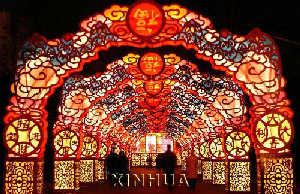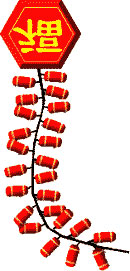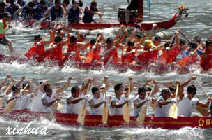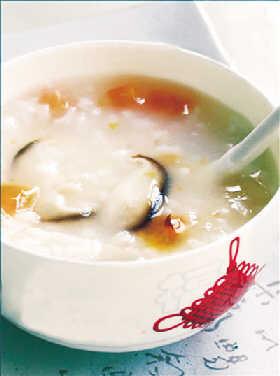Traditional Chinese Festivals
China’s Statutory Holidays
China boasts a rich array of statutory holidays. New Year’s Day falls on January 1st, offering a day of rest for all. The Spring Festival, the most significant traditional festival, is celebrated around the Lunar New Year. It features three days of vacation, spanning from New Year’s Eve to the second day of the first lunar month. Qingming Festival, observed on the day of the Lunar Qingming, provides a day off for people to pay their respects to ancestors and enjoy the spring scenery.
International Women’s Day on March 8th grants women half a day of leisure. Arbor Day is marked on March 12th, promoting environmental awareness and tree-planting activities. International Labor Day on May 1st offers a day of rest for the working population. Chinese Youth Day, celebrated on May 4th, gives young people aged 14 and above half a day off to commemorate the spirit of youth.
The Dragon Boat Festival, falling on the day of the Lunar Dragon Boat Festival, comes with a day’s holiday. International Nurses’ Day is celebrated on May 12th to honor the dedication of nurses. Children’s Day on June 1st is a special day for children under 14 years old, who enjoy a day off.
The Anniversary of the Founding of the Communist Party of China is on July 1st. Army Day of the Chinese People’s Liberation Army, celebrated on August 1st, provides half a day off for active-duty military personnel. Teachers’ Day is marked on September 10th to express gratitude to educators. The Mid-Autumn Festival, observed on the day of the Lunar Mid-Autumn Festival, offers a day of relaxation. National Day, celebrated on October 1st, features three days of vacation, allowing people to celebrate the nation’s birthday. Journalists’ Day is celebrated on November 8th.

China’s Major Traditional Festivals
China’s traditional festivals are an integral part of its rich cultural heritage. Prominent among them are the Spring Festival, Lantern Festival, Qingming Festival, Dragon Boat Festival, and Mid-Autumn Festival. In addition, various ethnic minorities in China also preserve their unique traditional festivals. For instance, the Dai ethnic group celebrates the vibrant Water-Sprinkling Festival; the Mongolian ethnic group holds the grand Nadam Fair; the Yi ethnic group has the exciting Torch Festival; the Yao ethnic group observes the Danu Festival; the Bai ethnic group participates in the bustling Third Month Fair; the Zhuang ethnic group enjoys the lively Song圩; the Tibetan ethnic group celebrates the Tibetan New Year and Wangguo Festival; and the Miao ethnic group has the distinctive Huatiao Festival.
Origins of China’s New Year’s Day
China’s New Year’s Day traces its roots back over 3,000 years to the era of Zhuanxu, one of the Three Sovereigns and Five Emperors. The term “New Year’s Day” first emerged in the Book of Jin, which states, “Zhuanxu regarded the first month of the summer as the beginning of the year, and in fact, the first day of the year is the spring of the New Year.” During the Southern and Northern Dynasties, Xiao Ziyun of the Southern Dynasty also wrote in his poem Jie Ya, “The four seasons bring a new New Year’s Day, and the first day of spring is filled with longevity.” These historical records illustrate the long-standing significance of this festival.
The Spring Festival: A Celebration of New Beginnings
The Spring Festival stands as the first and most important traditional festival in the Chinese calendar. Historically, it was known as the “New Year” as, according to the lunar calendar, it marks the first day of the first lunar month, signifying the start of a new year. With a history of over 4,000 years, it is believed to have been initiated by Yu Shun. Legend has it that more than 2,000 years before Christ, Yu Shun ascended the throne and led his subordinates to pay homage to heaven and earth on this day, which was then designated as the beginning of the year.
After the 1911 Revolution, China adopted the Gregorian calendar, and the Lunar New Year was subsequently renamed the “Spring Festival,” typically falling between late January and mid-February of the Gregorian calendar. During this festive period, households adorn their homes with Spring Festival couplets, New Year pictures, and other decorations. The night before the Spring Festival, known as “New Year’s Eve,” is a crucial time for family reunions. Families gather to enjoy a sumptuous “New Year’s Eve dinner,” and many stay up all night, a practice known as “staying up to welcome the New Year.” The following day, people embark on the tradition of “paying New Year’s calls” to relatives and friends, exchanging greetings and well-wishes for a prosperous new year. Traditional cultural activities such as lion dancing, dragon lantern dancing, rowing dry boats, and walking on stilts are also popular during this time.

The Lantern Festival: A Celebration of Light and Reunion
The Lantern Festival, celebrated on the 15th day of the first lunar month, is also known as the Shangyuan Festival, Yuanye, or Dengjie. It marks the first full moon night following the Spring Festival. Legend has it that Emperor Wen of the Han Dynasty (179 - 157 BC) established this festival to commemorate the suppression of the Lü clan rebellion on this day. He would go out to celebrate with the people, and over time, it became a significant festival. Sima Qian included it in the Taichu Calendar, and it reached its peak of popularity during the Sui, Tang, and Song dynasties.
According to the Book of Sui: Records of Music, “Every year in the first lunar month, when all countries came to pay homage, they would stay until the 15th day outside Duanmen and inside Jianguomen. The area would be filled with a grand theater,” and the number of people participating in the singing and dancing would reach tens of thousands, with the festivities lasting from dusk until dawn. Although the customs of the Lantern Festival have evolved over time, it remains a cherished traditional folk festival. People celebrate by eating yuanxiao, glutinous rice balls filled with sweet fillings, symbolizing reunion, and by enjoying the beautiful lantern displays. Lantern exhibitions are held in many cities, showcasing a diverse range of colorful lanterns with unique designs. In the countryside, activities such as setting off fireworks, walking on stilts, performing dragon dances, doing yangko dances, and swinging add to the festive atmosphere.

The Zhonghe Festival: A Tribute to Spring and the Dragon
The Zhonghe Festival, occurring on the second day of the second lunar month, is commonly known as the Dragon Raising Its Head. Coinciding with the Jingzhe solar term, it marks the time when spring returns, and all things come back to life. Insects, snakes, and other creatures emerge from hibernation, and it is said that the dragon also awakens, giving rise to the festival’s name. In ancient times, the dragon was regarded as a symbol of divinity, and people used this occasion to drive away pests.
During the Ming Dynasty, the custom of “smoking insects” was prevalent. People would fry the remaining cakes from the New Year’s Day sacrifice with oil and use the smoke to fumigate beds and kang. In rural areas, they would draw a circle of wood ash around the house and then around the water tank, believing it would attract the dragon back. The food on this day is also associated with the dragon. Eating dumplings is called eating dragon’s ears, eating spring pancakes is called eating dragon’s scales, and eating noodles is called eating dragon’s whiskers. Children often get their hair cut on this day, known as “shaving the dragon’s head,” while women avoid doing needlework to prevent “hurting the dragon’s eyes.” There is also a custom of illuminating the walls with candles, as the saying goes, “On the second day of the second lunar month, illuminate the beams, and scorpions and centipedes will have nowhere to hide.” Although the festival has somewhat faded from memory for many, some customs like eating spring pancakes still persist.

Qingming Festival: A Time of Remembrance and Reunion with Nature
Around April 5th of the Gregorian calendar, the Qingming Festival arrives. Also known as the March Festival in ancient times, it has a history of over 2,000 years. It is not only one of the 24 solar terms but also a significant festival. Originally a day for commemorating ancestors, it has evolved to include activities such as paying respects to the martyrs’ tombs and mourning the heroes who sacrificed for the country.
As the weather warms up during Qingming, the grass turns green, and the trees sprout new leaves. People often take this opportunity to go on outings in the countryside, fly kites, and enjoy the beauty of spring. Thus, the Qingming Festival is also affectionately known as the “Outing Festival,” a time when people can connect with nature and cherish the memories of their loved ones.

The Dragon Boat Festival: A Tribute to Qu Yuan
The fifth day of the fifth lunar month is the Dragon Boat Festival, originally named “Duanwu.” As explained in Taiping Yulan, quoting Fengtu Ji, “In the middle of summer on the fifth day of the fifth lunar month, ‘duan’ means the beginning.” Widely regarded as a commemoration of the ancient Chinese poet Qu Yuan, this festival has deep historical and cultural significance.
Qu Yuan, a patriotic poet from the State of Chu during the Warring States Period, was deeply distressed by the inability to realize his political ideals and the impending doom of his country. After the State of Qin conquered the State of Chu, he tragically drowned himself in the Miluo River on the fifth day of the fifth lunar month. In response, the local people rushed to the river to search for his body by rowing boats. To honor his memory, people have since celebrated the Dragon Boat Festival with various customs. These include wearing sachets, which symbolize Qu Yuan’s noble character and moral integrity; eating zongzi, originally intended to prevent fish from consuming his body but now a staple festival food; and dragon boat racing, representing the efforts to rescue him.

Qixi Festival: The Love Story of the Cowherd and the Weaver Girl
On the night of the seventh day of the seventh lunar month, the enchanting Qixi Festival takes place. This is the day when, according to legend, the Cowherd and the Weaver Girl are allowed to meet across the Milky Way. On this special evening, people place melons and fruits in the courtyard, and girls engage in the activity of tying colored threads and threading seven-hole needles. It is said that the one who finishes this task first is considered the most skillful. Due to its association with young girls, the Qixi Festival is also known as the “Girls’ Festival,” a time when they express their wishes for love and happiness.
Zhongyuan Festival: Remembering the Departed
The Zhongyuan Festival, celebrated on the 15th day of the seventh lunar month, is also known as the “Ghost Festival.” It is believed to be the birthday of the Earth Official. Buddhists mark this day by setting up “Yulanpen” and offering food to monks, as well as holding various religious ceremonies such as chanting sessions, water and land Dharma assemblies, and releasing river lanterns. It is thought that the custom of setting up “Yulanpen” in China originated during the reign of Emperor Wu of Liang in the 6th century. Although the practice of setting up “Yulanpen” has become less common in modern times, the tradition of releasing river lanterns still persists in some regions, symbolizing the guiding of the souls of the departed.
Mid-Autumn Festival: A Time for Family Reunion
The 15th day of the eighth lunar month is the Mid-Autumn Festival, a festival deeply associated with family reunion and often referred to as the “Reunion Festival.” Its name, “Mid-Autumn,” stems from its position in the middle of autumn. The festival has its roots in the ancient emperors’ practice of sacrificing to the moon in autumn. Over time, from the Wei, Jin, Tang, and Song dynasties, it evolved into a widespread custom of moon appreciation.
The term “Mid-Autumn” first appeared in the Book of Rites, and it was during the Tang Dynasty that it truly became a national festival. One popular legend links the festival’s formation to the story of “Emperor Ming of Tang’s Dream Tour to the Moon Palace.” In ancient times, on the Mid-Autumn Festival, people would offer exquisite mooncakes to the Moon Goddess. After the sacrifice, the whole family would gather to share the mooncakes, symbolizing unity and togetherness. This tradition of enjoying mooncakes and admiring the full moon continues to this day, making it a cherished time for families to come together.
Double Ninth Festival: A Celebration of Longevity and Filial Piety
The Double Ninth Festival, celebrated on the ninth day of the ninth lunar month, emerged as a significant festival after the Wei and Jin dynasties. The names “Chongyang” and “Chongjiu” have their origins in the Three Kingdoms period. This festival is associated with five main traditions.
The first is climbing mountains, which is a popular activity during the crisp autumn weather. It allows people to enjoy the beautiful scenery while also promoting physical health. The second is wearing dogwood, which is believed to have the power to repel autumn mosquitoes and ward off pests. The third is drinking chrysanthemum wine and admiring the blooming chrysanthemums. As chrysanthemums are in full bloom in the ninth lunar month, this activity is a delightful way to appreciate the beauty of nature. The fourth is eating Chongyang cakes, which are made from grains and are a symbol of progress and upward mobility, as the word “cake” is homophonic with “high” in Chinese. Finally, the festival is also an occasion for carrying out activities to respect the elderly, a tradition that has been passed down through the ages, emphasizing the importance of filial piety and care for the elderly.
Laba Festival: A Festive Prelude to the New Year
The eighth day of the twelfth lunar month, commonly known as Laba, is a traditional festival with a history of over 1,000 years. It was initially associated with the legend that this day was when Sakyamuni attained enlightenment. In temples, Laba porridge was cooked and offered as a sacrifice to the Buddha. Over time, this custom spread to the general public, symbolizing a bumper harvest of the five grains.
Today, while the original religious significance of Laba porridge has somewhat diminished, it has become a beloved seasonal delicacy. People prepare a variety of ingredients to make the porridge, which is rich in flavor and nutrition. The Laba Festival serves as an important prelude to the Spring Festival, marking the beginning of the festive preparations and filling the air with a sense of anticipation for the coming new year.
